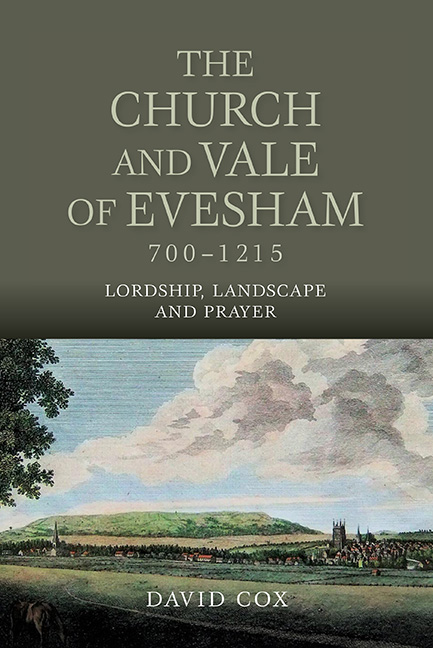Book contents
- Frontmatter
- Dedication
- Contents
- List of Illustrations
- Preface
- Timeline
- List of Abbreviations
- Part I From Minster to Abbey (701–1078)
- Part II Abbot Walter (1078–1104)
- Part III Twelfth-Century Themes (1104–1215)
- Afterword
- Appendix: The Abbots of Evesham to 1215
- Select Bibliography
- Index
- Miscellaneous Endmatter
- Frontmatter
- Dedication
- Contents
- List of Illustrations
- Preface
- Timeline
- List of Abbreviations
- Part I From Minster to Abbey (701–1078)
- Part II Abbot Walter (1078–1104)
- Part III Twelfth-Century Themes (1104–1215)
- Afterword
- Appendix: The Abbots of Evesham to 1215
- Select Bibliography
- Index
- Miscellaneous Endmatter
Summary
FROM the thirteenth century onwards Evesham abbey's rich estates and its security in law enabled it to meet every challenge and opportunity. As a perpetual corporation the abbot and convent could recover from setbacks that would have defeated an ordinary person, and could always raise large loans. In 1316 the abbot's annual net income, separate from that of the convent, was estimated at 640 marks (£426 13s 4d); and in 1379, after decades of economic adversity and the ravages of the Black Death, the estimate was the same. It is striking that the abbot's actual receipts in the accounting year 1456–7, at £418 13s, were similar to the estimate of 1316. Such figures are mere snapshots, and there are none for the abbey as a whole before 1535, when its net income was £1,183 a year. Even those few details, however, imply that Evesham abbey's capital was such that it could cope with any temporary loss of revenue.
The outlook was different for individuals, and many of them suffered or died as a result of economic adversity or sudden calamity. For instance, in 1265 the town and the monastery were pillaged after the battle of Evesham and in the fourteenth century the Black Death killed several of the monks; it was one of the reasons why there were only twenty-eight of them c.1380. The peasants of the Vale had less protection than the monks and the plague must have taken many lives. Nevertheless, for the survivors in the abbey, the town, and the Vale, the outcome could be positive. At the abbey the continuations of the domestic chronicle before and after the Black Death offer an unbroken recital of estates acquired and improved, lawsuits won and lost, great architectural schemes accomplished, and lavish purchases of plate and vestments lovingly described. The battle and the plague are not mentioned and it is recorded that even in difficult times Abbot John of Ombersley (1367–79) left the monastery ‘full of all good things’.
The emphasis of the chronicle is on expressions of religion that were visible, tangible, and frankly expensive. They could be seen as aids to private contemplation; but the keenest monastic minds were more interested in scholastic learning.
- Type
- Chapter
- Information
- The Church and Vale of Evesham, 700-1215Lordship, Landscape and Prayer, pp. 205 - 208Publisher: Boydell & BrewerPrint publication year: 2015



